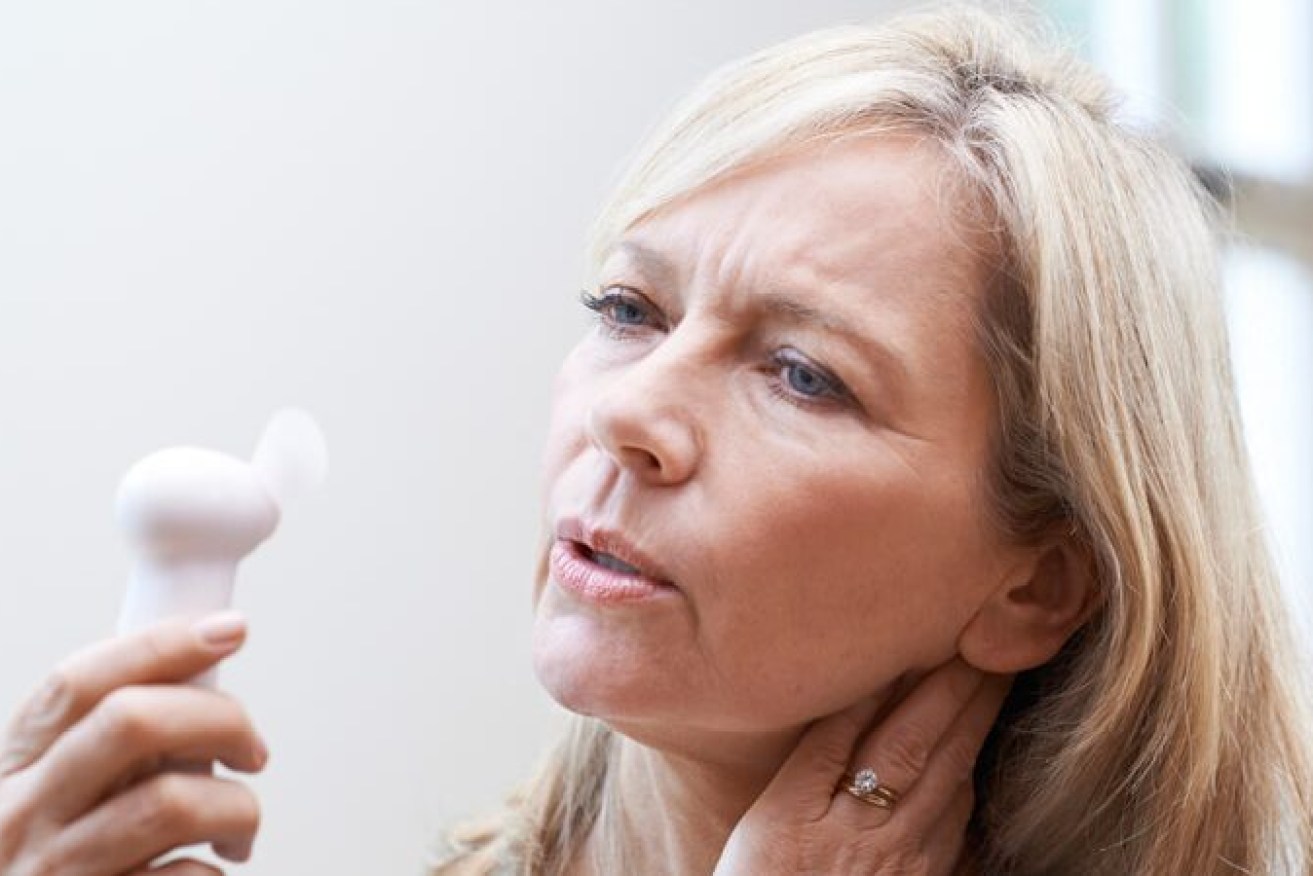Hot flushes, night sweats and, just for good measure, it’s costing $17 billion a year
A menopause “health crisis” is forcing women into early retirement, costing Australian women more than $17 billion per year in lost earnings and superannuation.


As well as debilitating symptoms, menopause is costing women an estimated $17 billion per year in lose earnings from salary and superannuation. (file image)
The shocking estimation by the Australian Institute of Superannuation Trustees (AIST) has triggered a new call for the Federal Government to address the gap between how much money women earn and can save for their retirement compared to men.
The organisation said menopause, the little-talked about condition impacting women aged around 50, was yet another reason women were having to leave work with less money to support themselves.
Women in Australia currently retire with around 23 per cent less super than men. The AIST data found women are leaving work on average 7.4 years earlier than men.
Calculating the cost for a woman who is forced out of her job, based on average earnings of $70,626.40 a year, it means she loses more than $522,635 in earnings and sacrifices more than $54,880 in super.
Across the country, this adds up to a collective loss of earnings and super for women of more than $17 billion per year.
AIST CEO Eva Scheerlinck said the AIST research pointed to a ‘health crisis’ among under 55-year-old women that was driving them to drop out of the workforce well ahead of when they planned to leave.
The AIST found 26.8 per cent of working women in Australia retired under the age of 55, with many saying the reason they left was that they suffered “sickness, injury or disability.”
“This leads to experienced middle-aged women leaving the workforce at a time when they are at the peak of their experience and earning potential,” Scheerlinck said.
Symptoms of menopause start in women between the ages of 45 and 55, or earlier in rare cases, with women aged 51 years on average experiencing symptoms.
Menopause can bring hot flashes, night sweats, loss of sleep and mood swings as well as reduced ability to concentrate and even erratic behaviour. Some women will have no issues, or only mild ones. For others, the symptoms can be debilitating.
The AIST research aligns with earlier Australian and international studies highlighting the costly impact of menopause on women.
Recent British studies show menopause was driving as many as 900,000 women a year to quit their jobs or take long-term absences from work.
In Australia, a 2021 survey of women at work uncovered a culture of ignorance and isolation around menopause in the workplace, no support for staff suffering symptoms, and women potentially quitting as a result.
The 2021 study, Driving the Change: Menopause and the Workplace by family support organisation Circle In and the Victorian Women’s Trust, found 83 per cent of women said their work was “negatively affected’ by menopause and almost half said they considered retiring or taking a break from work to deal with the symptoms.
Significantly, 58 per cent of women said that managing work during menopause was “challenging”, with 48 per cent reporting a drop in confidence and 46 per cent saying they tried to hide their experience.
Of those who said they wanted to quit but didn’t go through with it, the majority said they only stayed because they couldn’t afford to leave.
Menopause, of course, is just one of the reasons women struggle to save enough money to support a comfortable retirement.
On top of menopause, women’s time out of the workforce to raise children or care for elderly parents or other family members means they earn less than men over their working life, with less super contributed by their employer.
Then there’s the gap between what women and men are paid when they are at work – latest figures show men are paid 14 per cent more than women for doing the same job – which again means less money going into the retirement coffers.
This all adds up to women either being forced to stay in the workplace despite health issues or often being forced to leave when they don’t have enough money.
Gold Coast medical receptionist Jen Noyes said ongoing menopause symptoms tipped her into wanting to leave work.
The 61-year-old said she had been experiencing menopause symptoms for more than eight years.
“I’m so angry. I get mental blanks or forget something I’ve done over and over,” Noyes said.
“I’d leave if I could. But instead, I’m doing the job of a 22-year-old and getting paid the same. The managers don’t understand, just the more you do the more they expect, and they can’t see what you’re going through.
“I’d leave, but I don’t have enough money and I don’t qualify for the pension until I’m 67. Menopause has absolutely changed how I can function at work. It’s changed my life, now I just feel trapped.”












